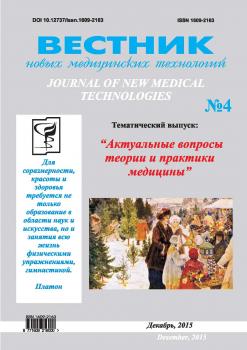This work presents the effects of multimodal anesthesia with neuraxial blockade on the basic parameters of central hemodynamics in patients operated for lung tumors, revealed by method of terapolar rheovasography by Kubicek (systolic blood pressure, diastolic, average heart rate, ejection fraction, minute volume of blood circulation, cardiac index, oxygen delivery index, the index of the total peripheral vascular resistance), as well the effects on acid‐base balance of arterial blood in the immediate post‐operative period. The level of antinociceptive protection was assessed by visual analogue scale. Comparison of results of patients operated by means of multimodal anesthesia and the patients, operated in an inhalation intravenous anesthesia with artificial lung ventilation and peri‐operative analgesia by opioid analgesics has revealed that the hemodynamic profile of the first group of patients is characterized by stability of the basic parameters such as blood pressure and heart rate, the lack of a pronounced reduction of the ejection fraction and stroke volume of the heart, despite vasoplegia caused by epidural blockade. The level of partial oxygen tension of arterial blood was decreased in the early postoperative period, but it was in the normal limits and he was statistically significantly higher than in the comparison group that can help reduce the risk of post‐operative complications. Significantly lower level of pain indicates adequate antinociceptive protection of patients.
multimodal anesthesia, neuraxial blockade, central hemodynamics, acid‐base status.
Хирургия злокачественных новообразова‐
ний лёгких сложна в силу анатомического рас‐
положения, строения, а также физиологиче‐
ской значимости для организма [1,2,10]. Спе‐
цифика данных операций связана с высокой
травматичностью, низким функциональным
резервом органов дыхания у данной категории
пациентов, продолжительностью операций,
риском развития дыхательных нарушений в
послеоперационном периоде [3,11]. Внедрение
современных методов диагностики и техники
оперативного лечения значительно расширяют
возможности хирургов, что требует адекватной
анестезиологической защиты [13]. Необходимо
уделять пристальное внимание как выбору ме‐
тода анестезии в целом, так и её отдельным
компонентам, а также периоперационному
обезболиванию [4,6,12].





